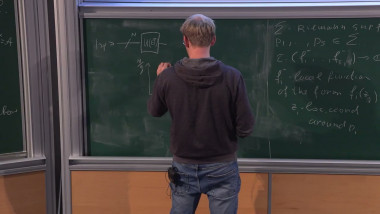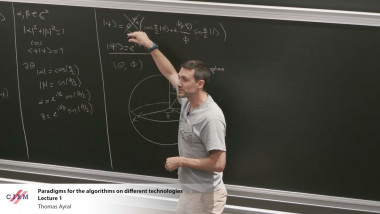
Quantum Error Mitigation Driven by Classical Simulations and Evolution Equations
De Oleg Kaikov

Paradigms for the algorithms on different technologies - lecture 1
De Thomas Ayral
De Hakan Tureci
Apparaît dans la collection : 2024 - T1 - WS2 - Driven quantum systems
Recent strides in machine learning have shown that computation can be performed by practically any controllable device that reacts to a physical stimulus that encodes the data. This perspective can push the boundaries of computation using Physical Neural Networks, and even help researchers understand their inspiration, biological neural circuits. One key challenge, though, is sampling noise, which limits the accuracy and the energy cost of computation with any physical system, even fault-tolerant quantum hardware. Are there reliable methods of computing when noise dominates? How can we compare the computing performance across very different systems in its presence? I will discuss one way of addressing these questions based on a metric, the Resolvable Expressive Capacity (REC), that was recently proposed to quantify the computational capacity of any physical system in the presence of sampling noise [1]. I will then discuss how the REC of a quantum system is limited by the fundamental theory of quantum measurement and how the latter imposes a tight upper bound on the REC of any finitely-sampled physical system. The calculation of REC requires only measured outputs and is, hence, easily calculable, as we demonstrate with optical and quantum systems [2]. A spectral problem associated with the REC can further be shown to provide the functions that a physical system can calculate most accurately under sampling noise. These “Eigentasks” can be used to design machine learning algorithms that are optimally robust to noise, as we demonstrate experimentally on a superconducting quantum processor. Finally, I will discuss a recent generalization of the above ideas to inference on streaming data, that enables processing of temporal data over durations unconstrained by the finite coherence times of constituent qubits, without the need for error correction or mitigation [3]. The applicability of this result in practice is demonstrated with experiments we conducted on a superconducting quantum processor.
[1] Hu, Fangjun et al. “Fundamental Limits to Expressive Capacity of Finitely Sampled Qubit-Based Systems.” arXiv:2301.00042.
[2] Hu, Fangjun et al. “Tackling Sampling Noise in Physical Systems for Machine Learning Applications: Fundamental Limits and Eigentasks.” Phys. Rev. X 13, 041020 (2023).
[3] Hu, Fangjun et al. “Overcoming the Coherence Time Barrier in Quantum Machine Learning on Temporal Data.” arXiv:2312.16165.
